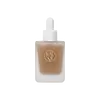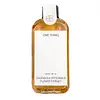What's inside
What's inside
 Key Ingredients
Key Ingredients

No key ingredients
 Benefits
Benefits

 Concerns
Concerns

No concerns
 Ingredients Side-by-side
Ingredients Side-by-side

Saccharomyces/Xylinum/Black Tea Ferment
Skin ConditioningPanthenol
Skin ConditioningGlycerin
HumectantPropanediol
SolventWater
Skin ConditioningButylene Glycol
Humectant1,2-Hexanediol
Skin ConditioningMethylpropanediol
SolventHydrogenated Olive Oil Unsaponifiables
EmollientTheobroma Cacao Extract
Skin ConditioningSodium Hyaluronate
HumectantHydrolyzed Hyaluronic Acid
HumectantHyaluronic Acid
HumectantBetaine
HumectantPolyglyceryl-10 Laurate
Skin ConditioningHydrogenated Ethylhexyl Olivate
EmollientHydrogenated Lecithin
EmulsifyingCaprylic/Capric Triglyceride
MaskingTromethamine
BufferingAllantoin
Skin ConditioningSqualane
EmollientEthylhexylglycerin
Skin ConditioningEthylhexyl Palmitate
EmollientDextrin
AbsorbentCetyl Ethylhexanoate
EmollientGlyceryl Acrylate/Acrylic Acid Copolymer
HumectantBiosaccharide Gum-1
HumectantCeramide NP
Skin ConditioningPolyglyceryl-10 Oleate
Skin ConditioningSodium Phytate
Beta-Glucan
Skin ConditioningHydroxypropyltrimonium Hyaluronate
Tocopherol
AntioxidantSodium Acetylated Hyaluronate
HumectantHydrolyzed Sodium Hyaluronate
Skin ConditioningSodium Hyaluronate Crosspolymer
HumectantPotassium Hyaluronate
Skin ConditioningCarbomer
Emulsion StabilisingXanthan Gum
EmulsifyingSaccharomyces/Xylinum/Black Tea Ferment, Panthenol, Glycerin, Propanediol, Water, Butylene Glycol, 1,2-Hexanediol, Methylpropanediol, Hydrogenated Olive Oil Unsaponifiables, Theobroma Cacao Extract, Sodium Hyaluronate, Hydrolyzed Hyaluronic Acid, Hyaluronic Acid, Betaine, Polyglyceryl-10 Laurate, Hydrogenated Ethylhexyl Olivate, Hydrogenated Lecithin, Caprylic/Capric Triglyceride, Tromethamine, Allantoin, Squalane, Ethylhexylglycerin, Ethylhexyl Palmitate, Dextrin, Cetyl Ethylhexanoate, Glyceryl Acrylate/Acrylic Acid Copolymer, Biosaccharide Gum-1, Ceramide NP, Polyglyceryl-10 Oleate, Sodium Phytate, Beta-Glucan, Hydroxypropyltrimonium Hyaluronate, Tocopherol, Sodium Acetylated Hyaluronate, Hydrolyzed Sodium Hyaluronate, Sodium Hyaluronate Crosspolymer, Potassium Hyaluronate, Carbomer, Xanthan Gum
 Reviews
Reviews

Ingredients Explained
These ingredients are found in both products.
Ingredients higher up in an ingredient list are typically present in a larger amount.
1,2-Hexanediol is a synthetic liquid and another multi-functional powerhouse.
It is a:
- Humectant, drawing moisture into the skin
- Emollient, helping to soften skin
- Solvent, dispersing and stabilizing formulas
- Preservative booster, enhancing the antimicrobial activity of other preservatives
Butylene Glycol (or BG) is used within cosmetic products for a few different reasons:
Overall, Butylene Glycol is a safe and well-rounded ingredient that works well with other ingredients.
Though this ingredient works well with most skin types, some people with sensitive skin may experience a reaction such as allergic rashes, closed comedones, or itchiness.
Learn more about Butylene GlycolEthylhexylglycerin (we can't pronounce this either) is commonly used as a preservative and skin softener. It is derived from glyceryl.
You might see Ethylhexylglycerin often paired with other preservatives such as phenoxyethanol. Ethylhexylglycerin has been found to increase the effectiveness of these other preservatives.